Majdanek and the NAZI death camps
When people think concentration camps and the Holocaust not many have heard of Majdanek. Majdanek is located in the outskirts of Lublin, Poland. Auschwitz and Dachau are the first camps that come to mind. This illustrates the confusion many have about the system that the Nazis set up to pursue their final solution. Dachua is a concentration camp.
There were over twenty thousand concentration camps across occupied Europe, but there were only 6 death camps or extermination camps. Millions of Jews and other enemies of the Nazi party died in concentration camps as well, but Chelmno, Treblinka, Sobibor, Majdenak, Auschwitz-Birkenau, and Belzec, all located in Poland, were built for the sole purpose of systematically ridding Europe of the Jewish race.
Majdanek the best preserved of the NAZI death camps
A Polish friend in Chicago had arranged a place for me to stay and a guide in Lublin. Standing in his living room Pawel, a Polish Jew, asked me why I had come. It must have seemed curious to him why an American had traveled halfway across the world to sift through the ashes of his ancestors. It was a question I could not answer. I had recently finished my master’s in history, but there was more to my journey than a simple interest in the past. I had read a one page summary in a guide book about Majdanek and Lublin, Poland, and in it the page stated that it was the best preserved death camp. I decided I must see this place.
Auschwitz was the biggest and most notorious of the camps, but much of the camp had been blown up by the Nazis as the Red Army closed in on it in 1945; whereas, Majdanek had been overcome by the blistering speed of the Soviet attack before self destruction by Nazis had been completed. Majdanek was the first of the extermination camps liberated by the Allies in July of 1945.
Arriving at Majdanek
Pawel gave me directions to the camp, but he refused to accompany me. I followed his directions, but I had trouble finding the entrance. I walked up and down the side streets of Lublin lined with attractive middle class dwellings with neat lawns and gardens. It did not look like a place one would find a grisly reminder of mass executions.
I walked to a dead end, and I saw that a trail continued where the road ended. I instinctively followed the trail and suddenly I crossed a threshold into 1943. Spread out before me were rows of barbed wire, watchtowers, barracks, and crematoriums.
Visit to Majdanek is an intense experience
I knew right then why I had come. Traveling is about understanding as is the study of history. Together they make a perfect marriage. As I walked around the death camp I could feel the sad horror of 80,000 lost souls who were murdered at this site only because they born to their parents who were part of a race and religion that was different or an enemy of the Nazi party. The camp is a shrine for the ultimate consequences of hate and intolerance.
I walked out of the death camp a couple of hours later completely exhausted from the mental fatigue of taking in the horrifying history, sights, and the general depressing aura the place emanated. Visiting sites like a concentration camp or the Killing Fields in Cambodia are not for everyone, but they should be. The history of the Holocaust is so awful and unbelievable it is sometimes hard to believe that it ever occurred. Holocaust deniers play on this notion. This is why a visit to these places are so important. It reinforces the reality of the event that no book, no documentary, and no museum can reproduce. After time spent here one leaves with a desire to become a better more tolerant human being.
A visit to Majdanek is like stepping back in time
I crossed back over the boundary from 1943 to the present day and the flowers in the neighborhood were in full bloom. “Never again” is a phrase often reiterated regarding the Holocaust of 1933-1945; nonetheless, since that time we have experienced the Khmer Rouge, Bosnia, Rwanda, and Darfur. I wish that I could always travel through streets lined with flowers and chirping birds, but sadly the history of mankind is not that simple and to understand it we must sometimes walk over mass graves, gas chambers, and killing fields.
Getting to Majdanek
Lublin is a little over 105 miles from Warsaw. Buses and trains leave regularly. There are several hostels and guest houses in Lublin to stay at. The town itself is a great off the beaten track place to visit with many charming restaurants and bars. You will definitely need a drink after a day visiting Majdanek.
Adventure on!
The goal of Traveling Ted is to inspire people to outdoor adventure travel and then provide tips on where and how to go. If you liked this post then enter your email in the box to get email notifications for each new entry. Daily travel photos are excluded from your email in order to not flood you with posts. There is no spam and email information will not be shared. Other e-follow options include Facebook (click on the like box to the right) or twitter (click on the pretty bird on the rainbow above).
On the right sidebar is a donate button. If you would like to donate in order to support the site, it would be appreciated. All donations would cover travel expenses and improvements to make the site better.








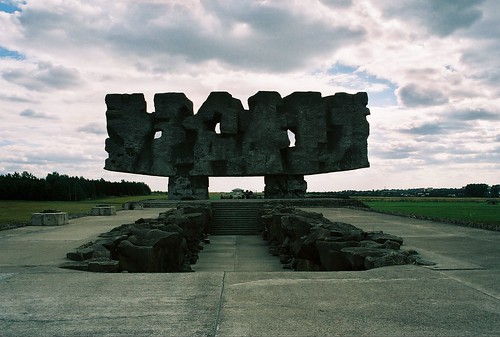
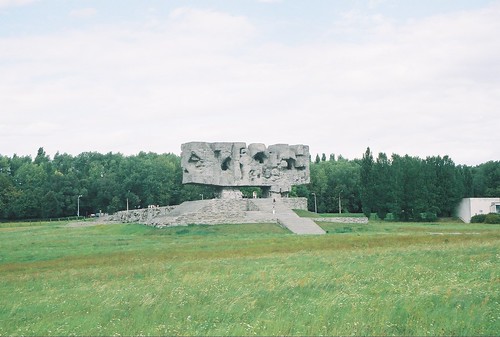

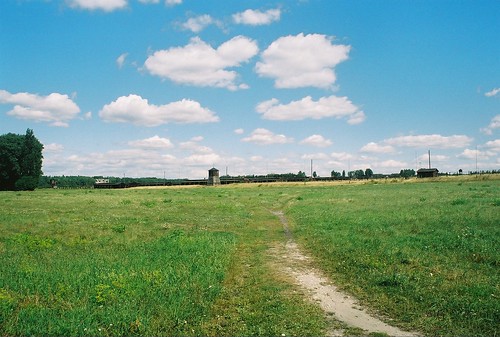
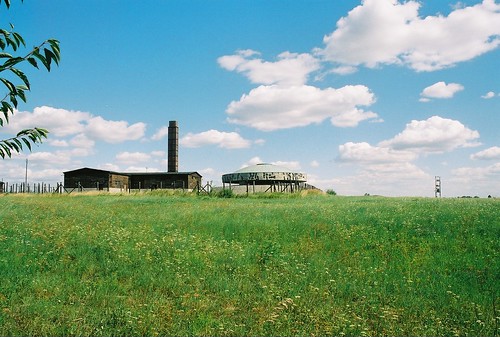
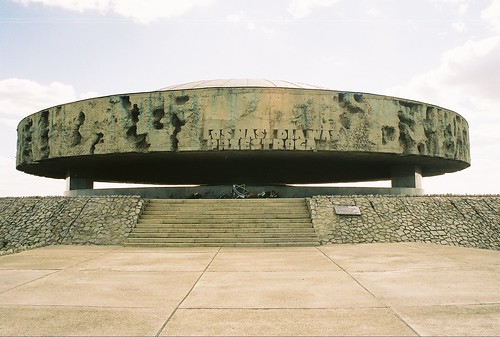
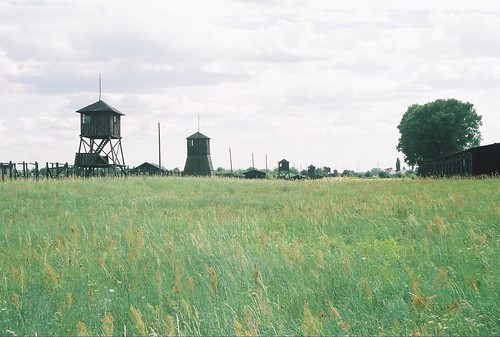


Thank your for sharing your sobering impressions of this poignant visit.
Jay Gordon recently posted..Cowboy poetry in Willits- Mendocino County
Ask The New York Times
To Change Its Stylebook
The New York Times continues to mislead its readers about German concentration camps. In this weekend’s Sunday Magazine, it even claims that Dachau, the notorious German concentration camp near Munich, is in Poland! The New York Times also refers to Auschwitz as a Polish concentration camp.
The only way that Times reporters and editors will stop making these mistakes is if the paper changes its stylebook, the official manual of style and usage, to require that stories about German concentration camps be historically accurate.
In 2007, UNESCO officially changed the name of Auschwitz to “The Auschwitz-Birkenau German Nazi Concentration and Extermination Camp (1940-1945).” The Kosciuszko Foundation has a petition on its web site requesting media outlets such as the Times to be historically accurate when writing about these camps.
Below is the latest letter that I have written to The New York Times, and on the right are e-mail addresses for the Times Publisher and a few of its editors. Please write to them and ask that they change their stylebook.
…………………………………………………………..
Dear Mr. Sulzberger:
The New York Times has parked its copy desk right over the threshold of malice and libel by refusing to be truthful about German concentration camps. Today’s New York Times magazine article “Yasir Qadhi: An American Cleric,” has a photo caption which says: “Qadhi and other American Muslim clerics pray at the Dachau concentration camp in Poland last August.” Dachau has never been in Poland. Dachau is in Germany. It is near Munich. The Germans used Dachau to murder Jews, Polish political prisoners, and those who challenged the Nazis.
The New York Times could have easily avoided this mistake if it had followed our request to change its stylebook regarding German concentration camps. More than 222,000 people have signed a petition on The Kosciuszko Foundation’s web site requesting that the Times change its stylebook regarding German concentration camps. More names are added to this petition every day.
http://www.thekf.org:80/events/news/petition/
It has already been signed by people such as Nobel Peace Prize winner Lech Walesa, Director of the Auschwitz-Birkenau Memorial and Museum, Piotr Cywinski; President of Poland Bronislaw Komorowski; Chief Rabbi of Poland Michael Schudrich; Dr. Zbigniew Brzezinski; Historian Norman Davies; David Harris, Executive Director of the American Jewish Committee; members of the United States Congress; Holocaust survivors; WWII veterans, Oscar winners, Pulitzer Prize winners, New Yorkers and people as far away as Poland, Israel and Australia. Yet still, The New York Times continues to rewrite history, and now it has redrawn the map of Europe.
Over the years, The New York Times has used the phrase “Polish concentration camp” to describe Auschwitz, a death camp designed by Germans, guarded by Germans, and which had the German phrase “Arbiet Macht Frei” hanging over the entrance. When the Germans installed the gas chambers, Auschwitz was part of “The Greater German Reich.” Maps from the period 1939-45 show that this was part of Hitler’s Germany that had expanded east.
Last October, the Times once again used the phrase “Polish concentration camp” to describe Auschwitz, but when the Polish Consul General in New York wrote to ask for a correction, Joseph Burgess from the NY Times’ Office of the Public Editor, wrote back saying: “Unfortunately, it seems that this will be unable to be corrected/changed.”
This was a ridiculous statement and once it was pointed out to your editors that the Times had admitted its mistake and issued corrections about this in the past – in the print edition and on the Internet – a correction was made to that story.
But must The New York Times really continue to play this game? These mistakes can be avoided by simply changing The New York Times stylebook regarding German Nazi concentration camps. At this point, refusal to change your stylebook represents a conscious choice to continue slandering Poles and Poland.
Please prove me wrong by doing the right thing and changing your stylebook to reflect historical accuracy.
Sincerely,
Alex Storozynski
President & Executive Director
The Kosciuszko Foundation
15 East 65th Street
New York, NY 10065
212-734-2130
http://thekf.org/
Thank you Ted
Best Regards
voytek
My son & I visited Dachau last summer. It was very enlightening. We learned how it started as a work camp and eventually got worse and worse, until it turned into a place of extermination.
Nance Carter recently posted..Boozing it up with less alcohol
This Helped me alot with a project that I was doing on Majdanek. I kinda got to know what it’s like to see a persons experience going there. Thanks.
Please teach the rest of these internet hoogalins how to write and research!
I’m a PhD student in Holocaust theatre and I’ve visited Auschwitz, but have still yet to visit other sites – not for lack of wanting to! There’s a foundation called The Well of Memory Foundation, which exists to help youth (in particular) learn more about the camps in Poland by organising trips to them. As places like Auschwitz have taken precedence in popular consciousness, ‘local’ camps are starting to fade from memory outside of their immediate locality, and Well of Memory exists to help combat this.
I thought/hope you might find this helpful!
An entire report about German death camps but not one mention of the perpetrators: Gemans! “Nazi” was a political party, not a country. The invasion and occupation of Poland were the acts of a country, not a political party. There was no “Nazi” language, country, or armed forces. Please refrain from disguising the perpetrators behind the nebulous term “Nazi.” Readers ill-informed about history could surely conflate the criminals with the scene of their crimes.
Hello Yvonne,
I am sorry this post offended your sensibilities. Thank you for reading and thank you for your comment. This is a travel blog and a personal reflection of my visit to Poland. This is not a historical essay, it is not a piece of professional journalism, it is not meant to teach history. Anyone who is so ill-informed about history to not know that NAZI’s came from Germany will not be helped by reading travel blogs on the internet.
“Majdanek and the NAZI death camps”?…
What is lt “NAZI”?…
.
Maybe it will surprise you but these mystical “nazis” did not come from Naziland but from Germany.
Those murderers were Germans.
Hello Jan,
Thank you for reading and thank you for the comment. Readers to this post will now know thanks to your comment that NAZI’s came from Germany.